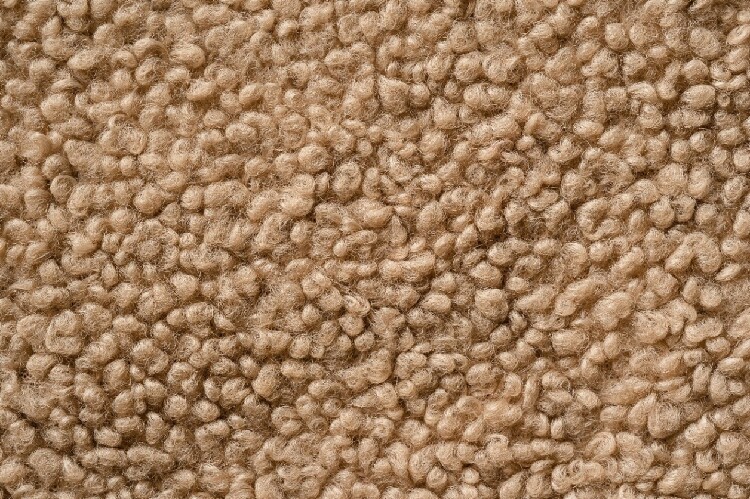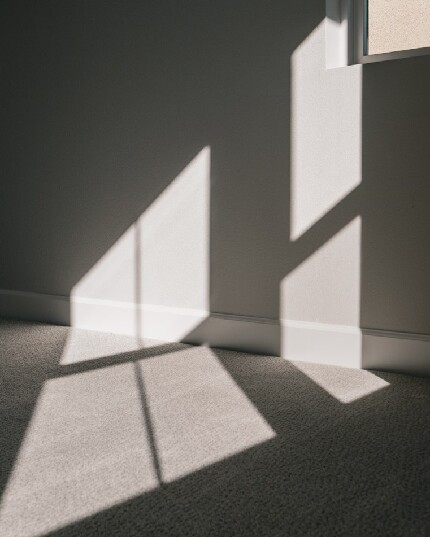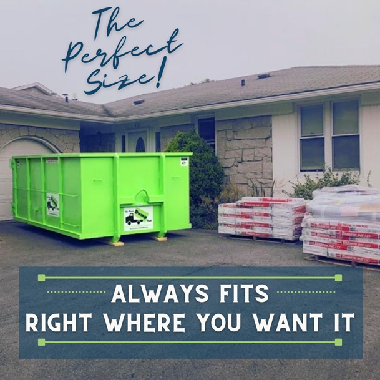
Carpet Removal: All the Tips and Tools You'll Need
After years of dirty footprints, drink stains, and lugging around that carpet cleaner rental, you've decided to part ways with your old carpet flooring. Like any renovation, one must discard a lot of debris and materials during and after the project. Wouldn't it be perfect if Bin There Dump That placed a dumpster in your driveway for just that?
Whether you are looking for a dumpster rental in Cleveland, a dumpster rental in Canton, a dumpster rental in Akron, or a dumpster rental in Northeast Ohio in general, Bin There Dump That is here to help.
You can stay on schedule and budget by referencing this article during carpet removal.
The Disadvantages of Carpet
Why do we want to get rid of our carpet in the first place? Carpeting in homes comes with several disadvantages. Firstly, carpets can accumulate allergens like dust, pet dander, and mold, potentially worsening indoor air quality and triggering allergies. They are also more challenging to clean than hard flooring, as spills and stains can become deeply embedded. Additionally, carpets can harbor bacteria and germs, making them less hygienic, especially in high-traffic areas. This can be problematic for individuals with respiratory issues, as carpeting may release particles into the air during vacuuming or walking.
Carpets are prone to wear and tear, showing signs of fading, matting, and fraying over time, requiring regular maintenance and eventual replacement. Furthermore, carpeting is less durable than hard surfaces, leading to a shorter lifespan and higher long-term costs.

What You Will Need
Investing in the proper tools to remove carpets can save the expense of hiring a contractor and gain the satisfaction of completing this project independently. The following is a list of equipment you'll find helpful for this specific project:
• Utility Knife or Carpet Cutter: Used to cut the carpet into manageable sections for removal.
• Pliers: Useful for gripping and pulling up carpet edges and stubborn staples or tacks.
• Flathead Screwdriver: Helps to pry up carpet edges and loosen staples or tacks.
• Hammer: Used to tap in nails or pry up stubborn tack strips gently.
• Knee Pads: Provide protection and comfort when working on your knees during removal.
• Dust Mask and Safety Glasses: Protect yourself from dust, debris, and potential allergens.
• Gloves: Protect your hands from sharp edges and potential irritants.
• Crowbar or Pry Bar: Helpful for removing baseboards and molding that might be holding the carpet in place.
• Staple Remover: Remove staples that might secure the carpet or padding to the floor.
• Shop Vacuum: Useful for cleaning up dust and debris accumulating during removal.
• Carpet Puller or Carpet Stretcher (optional): If the carpet is installed with a lot of tension, a carpet puller or stretcher might help loosen it.
• Dumpster: For proper disposal of the removed carpet, padding, and other materials. This is where your Cleveland dumpster rental or Akron dumpster rental through Bin There Dump That will come in handy!
• Knee Kicker (optional): This tool can help detach the carpet from tack strips along the edges.
It's important to note that the specific tools you need can vary based on the type of carpet, the way it's installed, and the condition of the existing floor. Always prioritize safety when undertaking any home improvement project.
Step-By-Step Guide to Remove Your Carpet
1. Prepare the Area:
Clear the room of furniture, ensuring you have a clean and open space to work in. Open windows and use fans for ventilation, as removing carpet can generate dust and particles.
2. Wear Protective Gear:
Wear gloves, safety goggles, and a dust mask to protect yourself from potential allergens, dust, and debris.
3. Start at the Corner:
Locate a corner of the carpet and use a utility knife to carefully cut a small section of the carpet, creating a starting point. Be cautious not to cut too deeply to avoid damaging the subfloor underneath.
4. Pull Up the Carpet:
Using pliers or carpet tongs, grip the cut edge of the carpet and begin to pull it up. You'll need to detach it from the tack strips along the walls. Tack strips are thin pieces of wood with small nails that hold the carpet in place.
5. Remove Carpet from Tack Strips:
Pull the carpet away from the tack strips, moving along the room's perimeter. Be careful of the exposed tack strips, as they can be sharp.
6. Roll Up and Cut into Manageable Sections:
As you remove the carpet, roll it up in sections to make it easier to manage. Use the utility knife to cut the carpet into smaller, manageable pieces.
7. Remove Padding:
If there's carpet padding beneath the carpet, remove it by pulling it up like the carpet. The padding is often attached with staples or adhesive.
8. Remove Staples and Nails:
Use pliers to remove staples, nails, or tacks still attached to the subfloor. This will ensure a smooth surface for any new flooring you install.
9. Check for Adhesive Residue (if applicable):
If your carpet is glued down, you may have adhesive residue left on the subfloor. Use a floor scraper to remove any residue gently. Be cautious not to damage the subfloor.
10. Clean the Area:
Sweep and vacuum thoroughly to remove any loose debris, dirt, or dust.
11. Inspect the Subfloor:
Examine the subfloor for any damage. If you notice any issues, address them before installing new flooring.
12. Dispose of the Old Carpet:
Place the rolled-up carpet sections, padding, and other waste into trash bags for disposal. Check your local regulations for proper disposal methods.
13. Consider Removing Baseboards (optional):
If you plan to replace them, now might be a suitable time to remove them using a pry bar or crowbar. This can provide a clean edge for your new flooring. Remember that the process might vary slightly depending on your specific carpet type and subfloor. Always take safety precautions and work carefully to avoid any unnecessary damage.
How to Dispose of Your Old Carpet

What should you do with all your carpet, padding, and tack strips now that they’ve been removed from the floor? Ensure a quick and easy cleanup with a Bin There Dump That residential-friendly dumpster.
Please choose any of our four (4) varied sizes to accommodate your needs. We can offer the six (6) cubic yard dumpster for smaller projects or the ten (10) cubic yard dumpster. For larger projects, including big bulky furniture, choose our fifteen (15) cubic yard dumpster or our twenty (20) cubic yard dumpster. From sizes to service, we specialize in "residential friendly," making us your best option for simple and friendly junk removal or waste management.
At Bin There Dump That, your weight allowance is included in the price. From smallest to largest: 6 cubic yard – 1.25-ton allowance. 10 cubic yard – 2-ton allowance. 15 cubic yard – 2.5-ton allowance. 20 cubic yard – 3-ton allowance. When you call to order your dumpster, our knowledgeable Consultants will provide free information on which size will be the best for your project. When renting a dumpster, and especially the help you'll have in the rental process, you certainly get what you pay for. Instead of wondering if there are any free dumpster rentals near you or wanting the cheapest dumpster rental near you, ask yourself what you want out of this experience. With Bin There Dump That, you can expect a free dumpster consultation with one of our friendly experts to aid your bin rental. They can provide your specific flat-rate dumpster rental price with their expertise, dumpster size charts, and dumpster size calculator.
Whether you're looking for a dumpster rental in Medina, a dumpster rental in Garfield Heights, a dumpster rental in Lorain County, or a dumpster rental in Northeast Ohio in general, it is our pleasure to assist.
- Revive Your Home for Spring with This Spring Home Maintenance Checklist
- 10 New Home Trends That Will Make Your Friends Jealous
- How Our Dumpsters Support Realtors and Property Managers: A Comprehensive Guide
- 12 Jaw-Dropping Clutter Statistics That Will Make You Want to Declutter Today!
- Unlocking Space: The Complete Guide on Pocket Door Installation
- Step by Step Guide on How to Install Carpet Like a Pro